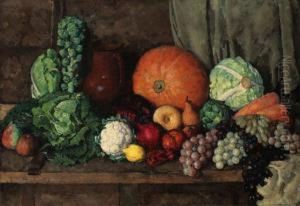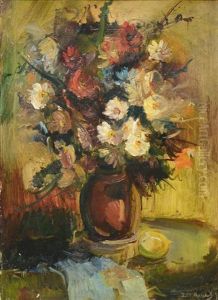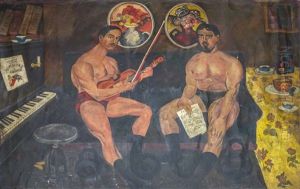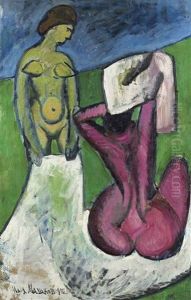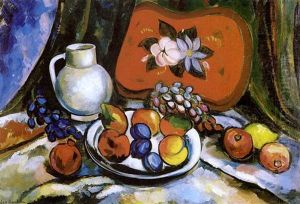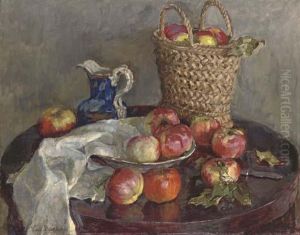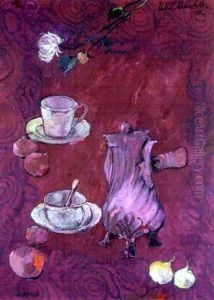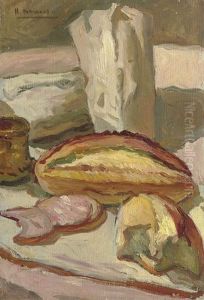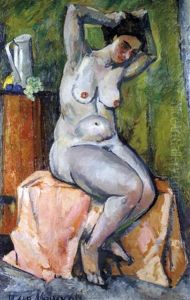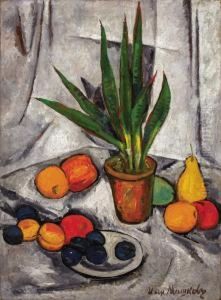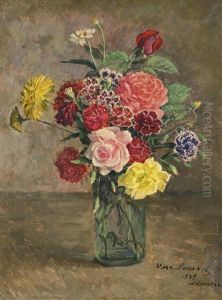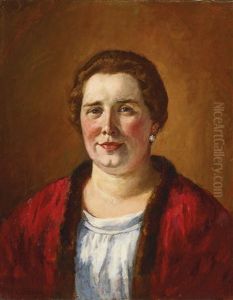Ilya Ivanovich Mashkov Paintings
Ilya Ivanovich Mashkov was a prominent Russian painter and a key figure in the Russian avant-garde movement, particularly known for his involvement with the Jack of Diamonds group. Born on July 29, 1881, in the Cossack village of Mikhailovskaya-on-Don, in the Russian Empire, Mashkov developed an early interest in art, which led him to study at the Moscow School of Painting, Sculpture and Architecture. Here, he was influenced by the works of Cézanne, Matisse, and other Western European artists, which significantly shaped his artistic style.
Mashkov's work is characterized by its vibrant color palette, dynamic composition, and bold, expressive brushwork. He was deeply inspired by Russian folk art and culture, which is evident in the thematic and stylistic elements of his paintings. Alongside fellow artist Pyotr Konchalovsky, Mashkov became one of the founders of the Jack of Diamonds group in 1910, which was pivotal in introducing avant-garde trends to Russian art. The group's exhibitions showcased works that broke away from traditional academic styles, emphasizing instead the use of bright colors, simplified forms, and innovative techniques.
Throughout his career, Mashkov enjoyed considerable success and recognition. He was not only active as a painter but also worked as a teacher, influencing a new generation of Russian artists. His subjects ranged from still lifes and portraits to landscapes and scenes of everyday life, each imbued with a sense of vitality and a deep appreciation for the material world.
Despite his avant-garde leanings, Mashkov's work underwent a transformation following the Russian Revolution of 1917. Like many artists of his time, he adapted his style to fit the changing political and social landscape, which led to a more realistic approach in his later years. During the Soviet era, he focused on themes that aligned with socialist realism, yet his work continued to be celebrated for its technical mastery and unique aesthetic.
Ilya Ivanovich Mashkov passed away on March 20, 1944, in Moscow, leaving behind a rich legacy that has had a lasting impact on Russian art. Today, his paintings are held in high esteem and can be found in major museums and collections around the world, serving as a testament to his artistic achievements and the vibrant cultural era in which he lived.

